There is something about bright and airy Scandinavian design that just calls to the senses.
The soothing use of color and light; the negative space that allows the gaze to wander and breathe; the layers of cozy, natural textures that invite you to curl up with a good book; it’s no surprise that Nordic style is so popular. If you’re thinking about a Scandinavian-inspired room makeover, want to know what the heck “hygge” is all about, or are curious about where Scandinavian design comes from, this is the post for you!
- What’s the definition of “Scandinavia?”
- History and Origins of Scandinavian Design
- What defines Scandinavian design?
- Iconic Scandinavian Designers: Five Designers You Must Know
- What is Hygge?
- Scandinavian Design Spin-offs
- Best Blogs to Follow for Scandinavian Design Inspiration
- Scandinavian Design Books You Must Read
- Best Scandinavian Instagram Accounts to Follow
What’s the definition of “Scandinavia?”
Before we dive into all the ins and outs of what defines Scandinavian design, let’s make sure we know what exactly is meant by the word, Scandinavia. Time for a mini geography refresher!
“Scandinavia” refers to the countries making up the Scandinavian Peninsula in Northern Europe. Strictly speaking, this means the countries Norway and Sweden. But in the design world, Denmark, Finland, and Norway are grouped into this region as well, due to their linguistic, historical, and especially cultural connections.

Together, these five countries have shaped what we think of as “Nordic style,” with their accessible and timeless interior furnishings and decor.
History and Origins of Scandinavian Design

The Scandinavian design movement began appearing as early as the 1930s in Northern Europe. Known as “Functionalism” in its origin countries, it evolved as Scandinavia’s own flavor of the Modernist ideals that were sweeping through the art and design scenes at the beginning of the 20th century.
This was a volatile time period for the world, which saw the beginning of the Machine Age, two World Wars, and the Depression. Artists and designers of this time period were intent on overthrowing “old world” values and traditions, and focused instead on experimentation and democracy.
It was the emphasis on democracy that helped Functionalism take a foothold in Scandinavia, thanks to the efforts of regional artist groups and institutions, such as the Swedish Society of Industrial Design. These designers believed that good design should be accessible to all. Affordability was important, as was practicality.
In addition, the Nordic interior designers responded to their harsh winters and short days with open spaces that maximized light, emphasized function and simplicity, and took inspiration from nature to help create a cozy, yet bright, domestic retreat.
Scandinavian design made its American debut in a 1954 design show, aptly named Design in Scandinavia, which traveled throughout the U.S. and Canada. This tour showcased the region’s belief that design should improve daily life with products that are beautiful without being heavy-handed, and functional without being stark. By the 1960s, Scandinavian design became all the rage on the North American continent, and continues to be immensely popular today.
What defines Scandinavian design?

Scandinavian design has spanned decades to capture our attention, and our Pinterest boards, because its core principles — functionality, simplicity, and improving daily life — are so universally appealing. We hectic 21st century busybodies yearn to find balance and calm, and we can see the promise of a quieter life in Nordic style homes.
At its heart, Scandinavian design is about the art of living well.
Designers of this style strive to create a comfortable domesticity in their homes, through the use of multi-functional decor, negative space, rich but casual textures, and LOTS of organization.

All of these elements serve to create space for an unencumbered lifestyle, that is about time spent, and not things purchased.
Scandinavian Design vs. Minimalist Design: What’s the Difference?
“Minimalist” and “Scandinavian” have become somewhat interchangeable words these days. And while these styles do share the ideals of simple living, open concept spaces, and practical furnishings, they do have some differences.
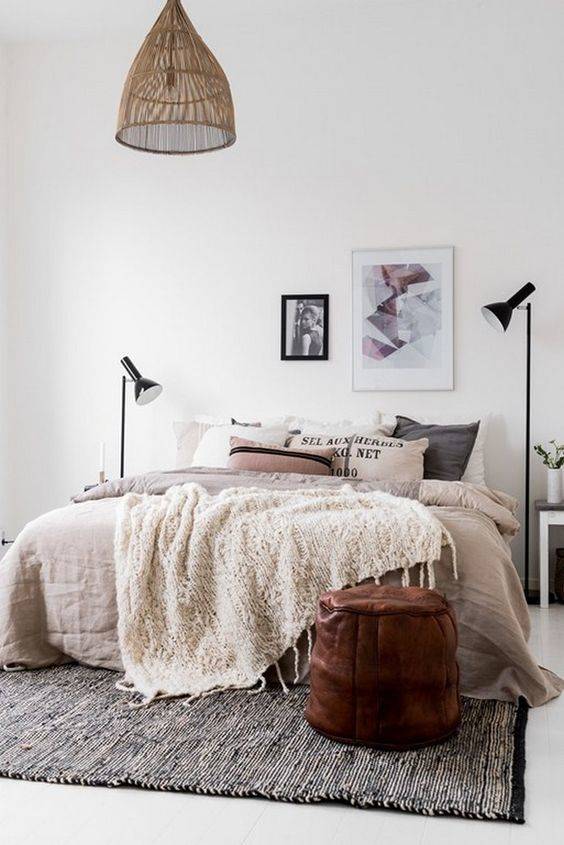
Scandinavian design achieves an open look by drawing inspiration from nature, with flowing forms and natural materials.

Minimalism, by contrast, is more industrial, using stainless steel, lacquered wood and plastic, and harder angles. Black and white is a common color palette, although today’s minimalism is generally softer than its origins.
Key Elements of a Nordic Style Room:
Furnishings should be practical and unobtrusive; decor should be uncomplicated and limited to well-loved pieces.
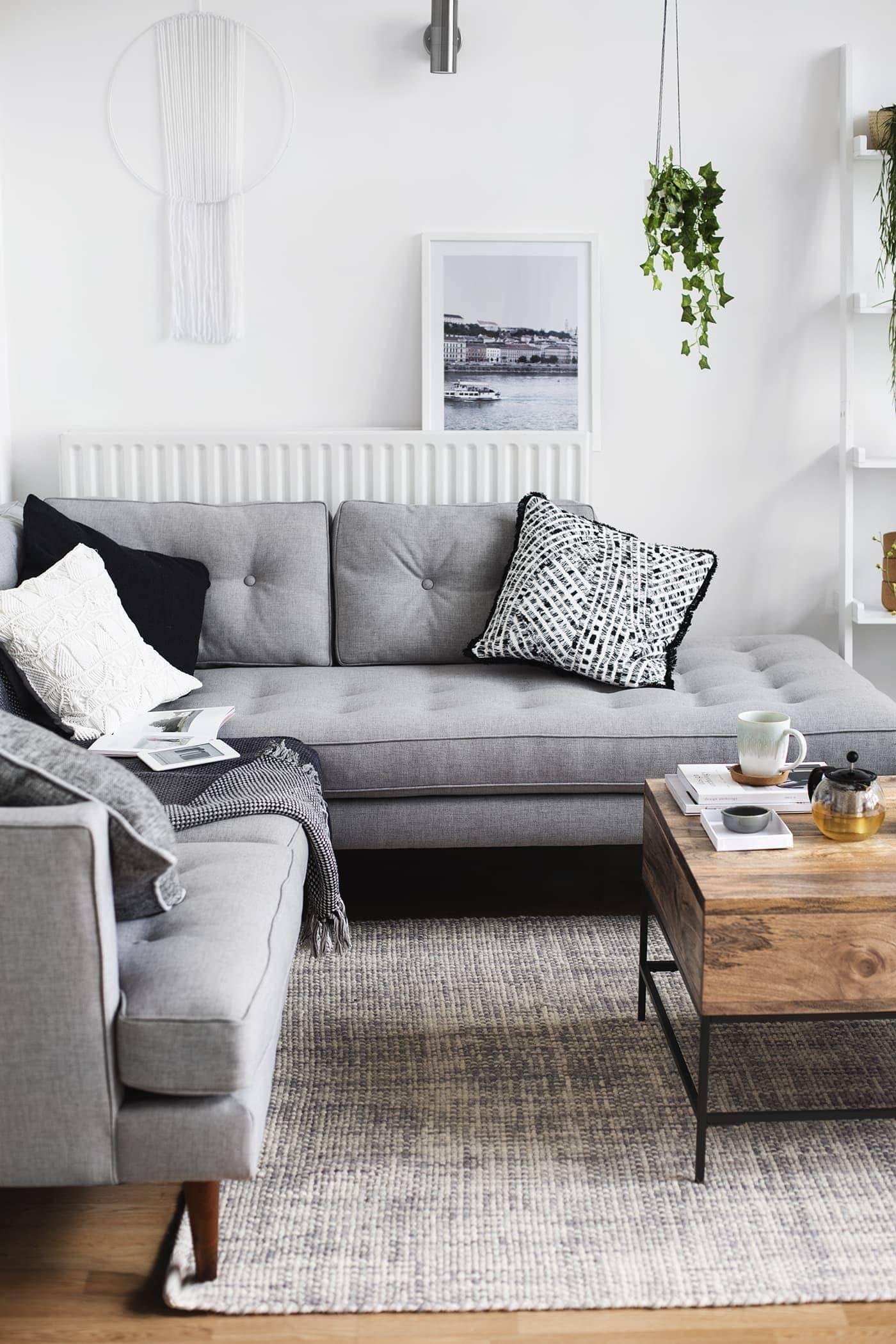
Designers of this style are inspired by nature, and demonstrate this love through the use of natural elements, like light-toned wood, stone, linen, and leather.

Rooms are structured to maximize natural light, with tall windows, sparse window dressings (or none at all), and subtly neutral color palettes, such as white, black, and gray, or light, muted pastels.

Craftsmanship and quality are valued, but so is accessibility. Scandinavian style frequently mixes old and new pieces together.

Can’t decide if Scandinavian style is right for you? Take one of these interior design quizzes to find out!
Iconic Scandinavian Designers: Five Designers You Must Know
If you’ve even glimpsed a photo of a Scandinavian home, you’ve seen the legacy of one of these iconic Scandinavian designers. These men and women shaped Scandinavian design through their well-known and timeless works.
Greta Magnusson-Grossman, Sweden, 1906-1999
One of the few women designers to be given recognition during this time period, Grossman made her mark on the Los Angeles Modernism scene.

Arne Jacobsen, Denmark, 1902-1971
One of Denmark’s most renowned architects, Jacobsen’s influence over Scandinavian interior design continues to inspire designers today.

Poul Henningson, Denmark, 1894-1967
This Danish modernist was best known for his lighting fixtures from the 1920s.

Armi Ratia, Finland, 1912-1979
Ratia was one of Finland’s first women entrepreneurs, and the founder of the acclaimed Marimekko brand. This printing firm is best known for its radiant patterns, still seen in many Nordic interiors today.

Hans Wegner, Denmark, 1914-2007
An integral part of the “Golden Age” of Danish furniture design, thanks largely to his legendary chairs.

What is Hygge?

You just can’t read about Scandinavian design without coming across the term, “hygge.” This Danish and Norwegian concept has become so trendy in the past few years that it’s practically a buzzword. But unlike a lot of internet fads (I’m looking at you, unicorn frappuccino), hygge is actually really, really good for you.
So what exactly is hygge?
Hygge (pronounced HUE-guh) is a Danish word used to acknowledge a special feeling or moment. It can be alone or with friends, at home or out, ordinary or extraordinary, but it is always cozy, charming, or special.
From hyggehouse.com
More than a word or something you can buy, hygge is a mindset found by slowing down to enjoy the simple daily pleasures of life. It is about creating intimacy, mindfulness, and contentment, both in social gatherings and private moments. Stepping into a hot bath at the end of a long day; sharing laughs with a friend over a pot of tea; roasting marshmallows by a summer campfire; these are all moments infused with the cozy warmth of hygge.
In design, the ideal of hygge translates into crafting spaces and furnishings that bring simplicity and calm to the home. The Nordic design mantra of “beautiful things that make life simpler” is very applicable here.


There is no “hygge look” — it’s a feeling, not a design fad. But, there are some simple things you can do in your home to make hygge moments more likely.
How to Hygge in your Home:

- Declutter and simplify your possessions. Keep the things that serve a need or make you happy. Less clutter = more calm.
- Make a cozy reading nook. Or a corner to sit and think. Surround it with candles, cushions, and cozy throws.
- Set up a space for ritual. Be it a spot to meditate or pray, or a coffee tray on your counter so you can make your daily brew, make it easy for yourself to practice a daily ritual by designating a spot in your home to do so.
- Light candles. Every day! Apparently the Danes burn more candles per year than any other Europeans. They also consistenly rank as the happiest people in Europe. Coincidence?
- Invite guests. And I don’t just mean for special occasions. Give yourself permission to make occasions special by having your favorite humans over, even if the bathroom hasn’t been cleaned and there’s toys on the floor. Hygge it up by sharing simple food and enjoying each other’s company.
Scandinavian Design Spin-offs
The Nordic look has become so popular and widespread, it’s no wonder there are many variations on the minimal, functional theme. Here’s a closer look at some of our favorites:
Cottage and Farmhouse Scandinavian Style

More rustic than its predecessor, cottage Scandinavian style pulls inspiration from traditional farmhouse living. Weathered wood, classic textiles, and vintage details combine with light and airy palettes to create this look.
Industrial Scandinavian Style

This look combines the light wood finishes and natural textures of Scandinavian decor with industrial factory elements and metal details.
Scandibo Style

This is the one for me! Scandibo style, or Scandiboho, pairs Scandinavian and bohemian aesthetics for a look that is clean and minimal, while also being more “full” than traditional Scandinavian design. It’s a bit of a maximalist minimalism, if you will. Natural textures are taken up a notch, with lots of 1970s inspired macrame and weavings. Color is a little more playful. And most of all, this style is all about plants, plants, and more plants.
Best Blogs to Follow for Scandinavian Design Inspiration
Do you love design blogs? You’re on Curbly — of course you do! We’ve got some fabulous ones about Scandinavian design that will keep you inspired and wanting to embrace all things Scandi.

One of my personal favorites, blogger Niki Brantmark made it into the best books AND best Instagram accounts lists below too, thanks to her impeccable eye for style and gorgeous home tours.
2. A Merry Mishap

Stylist Jennifer Hagler writes with “a passion for Scandinavian design and minimal aesthetics,” and shares inspiration not only in interior design trends, but lifestyle as well.
3. Trendenser
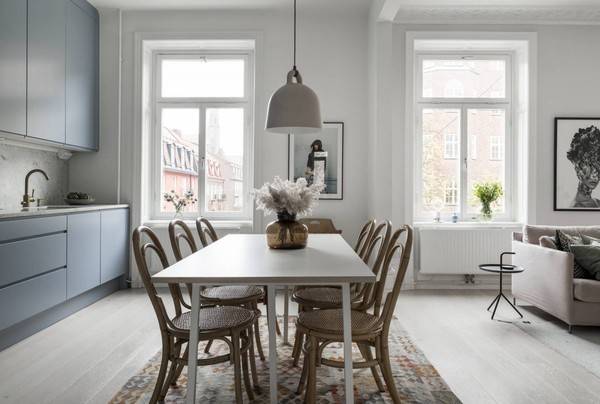
This Swedish design blog runs a “Weekly Interior News” feature for all the juicy design things happening in the world. So much better than reading the actual news, don’t you think?
4. Stylizimo

Hailing from Norway, blogger Nina styles most of the stunning scenes on her blog herself. You’ll love her use of earth tones and airy furniture, and oh-em-gee this closet.
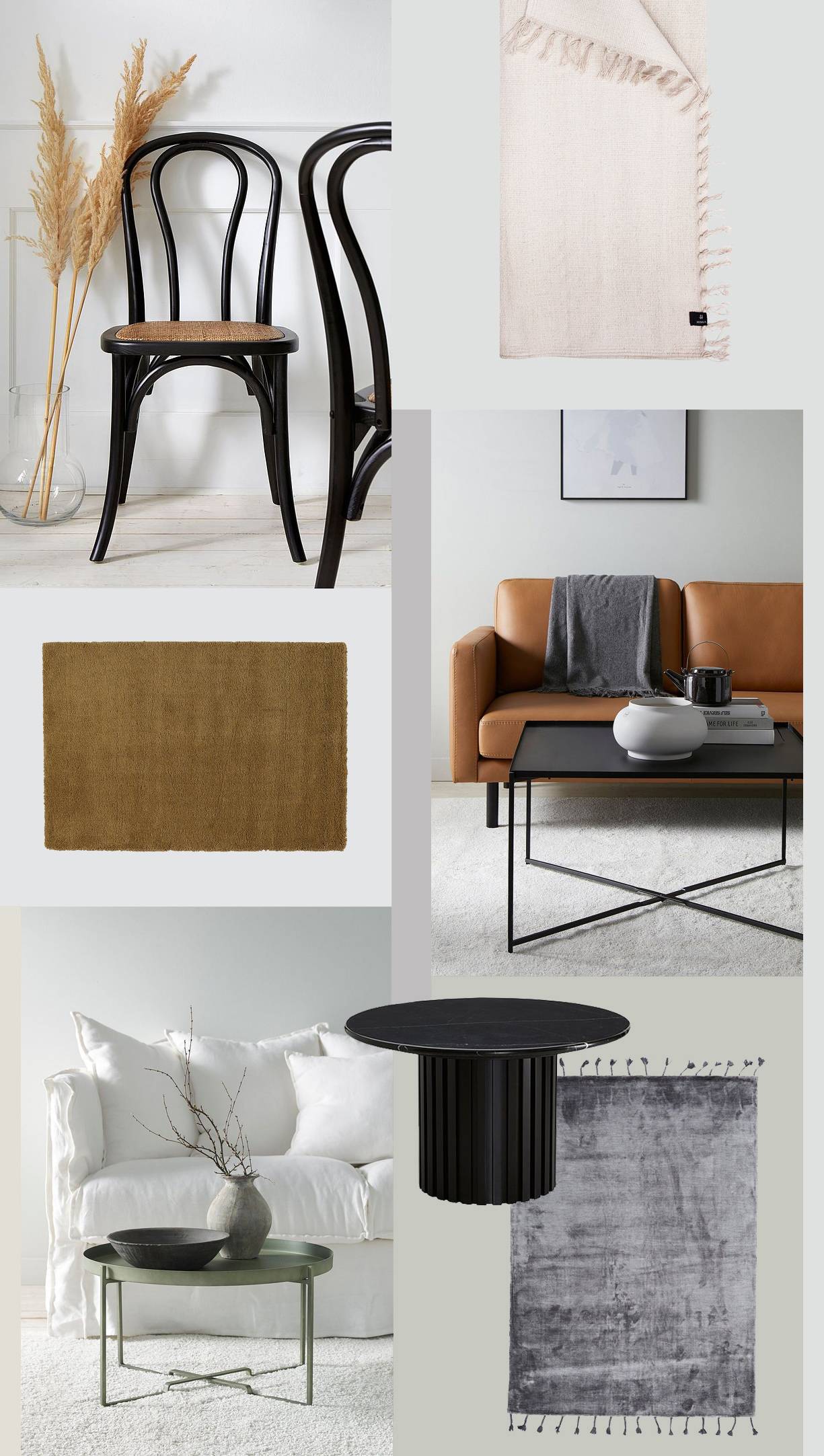
Katarina Dima, a Grecian living in Norway, originally started her blog to document her home renovation. It has since flourished into a space for design tips and inspiration in the Nordic style, with influences from contemporary American and industrial styles.

No list of best Scandinavian design blogs would be complete without Ingrid Opstad’s blog, chronicling her efforts to stay in touch with her Norwegian roots while living in Italy.

Not only is Sarah’s blog filled with the most crisp, luscious home tours you can imagine; she also sells original prints and photos in her online shop, so you can take home your own Scandi-inspired artwork.
Scandinavian Design Books You Must Read
If you’re looking to learn more about Scandinavian design, or just show your friends how stylish you are, these are the books you’ve got to keep on your coffee table:

Scandinavian Design, by Charlotte and Peter Fiell
A comprehensive guide to Scandinavian design and its history, you’ll find in-depth information on more than 180 influential designers in this volume.
The Kinfolk Home: Interiors for Slow Living, by Nathan Williams
The homes featured here may span the globe, but they all evoke the Scandinavian aesthetic and lifestyle.
Scandinavia Dreaming, by Angel Trinidad
You’ll find this book as beautiful to hold as it is to read!
The Scandinavian Home: Interiors Inspired by Light, by Niki Brantmark
Written by the author of My Scandinavian Home blog, this book is brimming with light and bright spaces from the Scandinavian region. Bonus: check out Niki’s book Lagom, too — I own it and it’s just a lovely read!
New Nordic Design, by Dorothea Gundtoft
This beautiful book profiles Scandinavian designers practicing today, with examples of their works, interviews, and loads of inspiration.
Best Scandinavian Instagram Accounts to Follow
We all know we’re really in it for the pretty pictures. Good news for people who want to fall down the Instagram rabbit hole: there are so. many. fantastic. Scandinavian inspired Instagram accounts. Get ready to double-tap!
1. My Scandinavian Home @myscandinavianhome

Niki Brantmark is the author behind this stunning Instagram account, and blog by the same name. You’ll go crazy over the Nordic style home tours she features on both platforms.
2. Scandinavian Homes @scandinavianhomes

This interior styling firm hailing from Stockholm just nails Scandinavian style. Minimal, functional, and cozy all at once, wouldn’t you say?
3. Klara @kajastef

Warm wood tones contrast perfectly with stark white furnishings in the home of photographer and stylist Klara.
4. Sandra / Wolle Hoch Drei @wollehochdrei

Knitter and stylist Sandra’s home is filled with comfy, bright spaces that make hygge possible every day.
5. Friederike Weid @friederikchen

This young influencer’s home epitomizes the Scandibo look with her lavish use of plants, macrame, and 1970s craft-inspired textures.
6. Tabita Aundal @tabita_aundal

Blush lovers, you will adore Tabita Aundal’s calm blush-infused home with a classic Nordic aesthetic.
7. Stadshem @stadshem
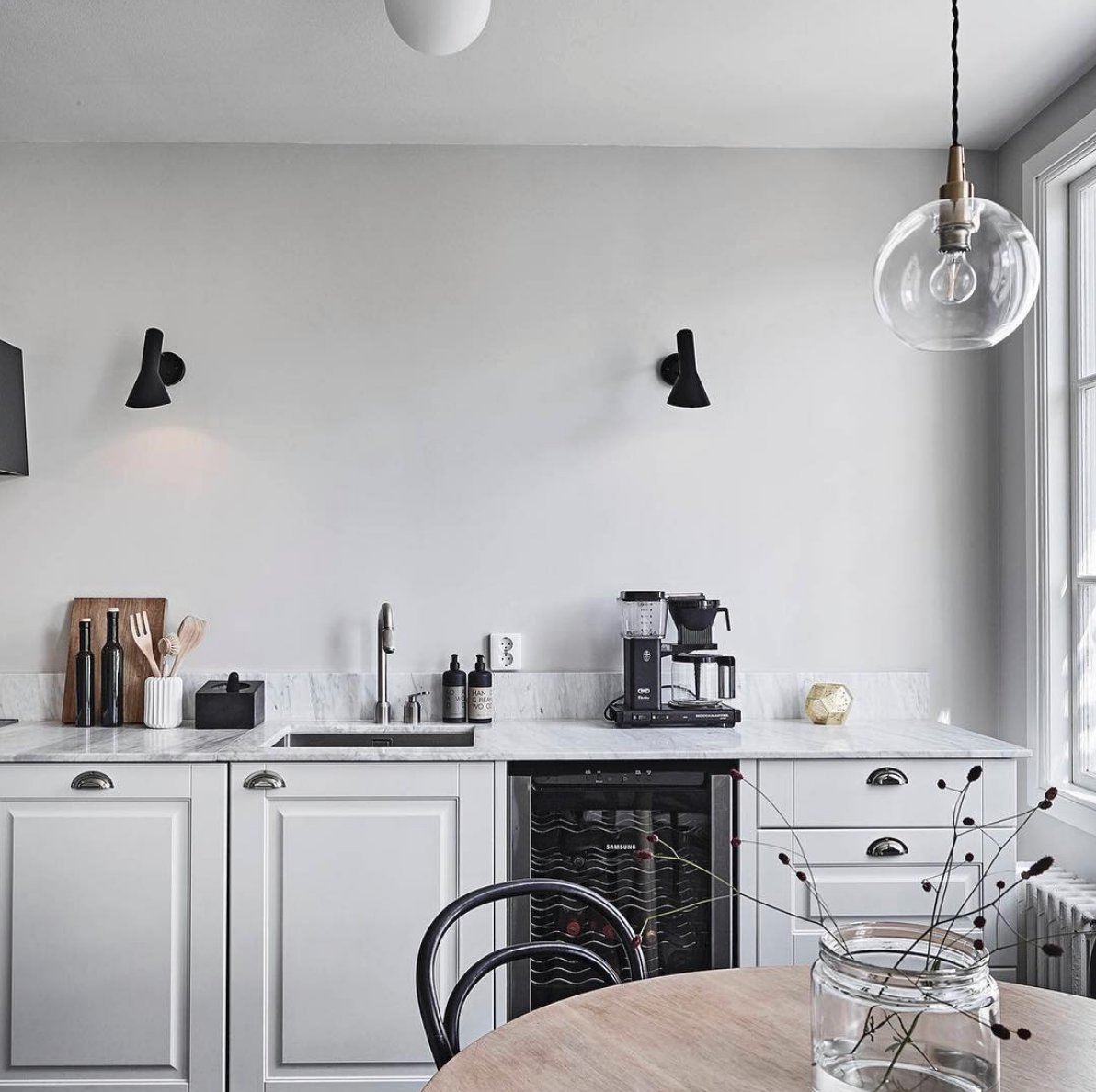
This is the Instagram account of a Swedish real estate firm. In case the significance there didn’t sink in…this Instagram account shows absurdly gorgeous Scandinavian homes that are actually for sale. Anyone else thinking of emigrating?
There is so much beauty in Scandinavian interior design, and its attention to both function and form means there is something for everyone. Have you ever considered decorating in the Scandinavian style? What is something about this look that you love?

Looking for even more Scandinavian style inspiration? Check out our post on Scandinavian design ideas to copy! Or, if you don’t know if this style is right for you, try one of our favorite interior design style quizzes to help narrow it down.

What a fabulous and informative article! I grew up in a home with Danish modern furniture and have always been drawn to the look, thanks for the well researched information.
I love it! Awesome article!